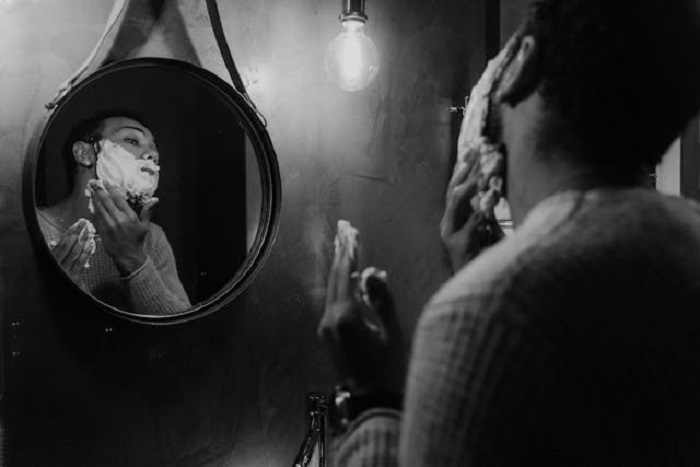
How to get a clean shave – tips from a skin expert
The development of facial hair is a sexual characteristic that marks adulthood in men. In the past, facial hair was often frowned upon culturally in Nigeria, with some institutions even mandating a clean shave. Well-groomed facial hair has gradually become more acceptable globally, however.
Despite this shift, anecdotally, many men would prefer to have a clean shave. But they worry about razor burn, nicks, skin irritation and developing bumpy skin.
Pseudo-folliculitis barbae is a common disorder on the face and neck of individuals of African and Asian descent as a result of shaving. It happens when hairs grow back into the skin and cause inflammation and irritation. The result is papules (solid bumps), pustules (fluid-containing bumps) and post inflammatory hyperpigmentation (dark marks).
There is no precise figure for the number of people with this condition. It has been attributed to genetics, the structure of hair, and poor shaving techniques. Facial hairs are curved, which increases the likelihood of re-growing hair penetrating the skin or growing inward within the follicle.
Razor or shaving burn – pain, itching, redness and rashes – results from a sensitive skin, inadequate skin preparation before a shave, the use of dull blades, shaving against the direction of hair growth or irritating shaving products. Razor burn usually stops after a couple of weeks of continuous shaving.
As a dermatologist with research in shaving habits, my advice is: prepare the skin well; use the right shaving tools; use proper shaving techniques; and care for your skin after shaving. This applies whether you are using razors, clippers, depilatory creams or powders, plucking, waxing, electrolysis or laser hair removal.

Skin preparation
To ensure a comfortable shave and minimise skin irritation, wash your face with water and a gentle cleanser (soap) during or after a bath to reduce the oil, sweat and dirt on your skin. This softens facial hair, making it easier to cut with less pressure. It also produces blunt tips, reducing the chances of the hair penetrating the skin when it grows back. Before shaving, apply foam, gel or a soap and water mixture. This hydrates the hair and enables the blade to glide over the skin, reducing friction and skin irritation.
Shaving tools
The choice of a shaving instrument is dependent on skin sensitivity, beard texture, hair growth and the smoothness desired. Other considerations are cost and time availability.
Razors give the smoothest shave. If you have a sensitive skin or soft facial hairs, single razors are ideal. If you have thick and coarse hair, multiple blade razors may be more efficient. The multiple blade razors lift and cut the hair, allowing the tips to recede slightly into the follicle for a smoother shave.
An electric razor can be used without prior skin preparations (dry shave) and causes fewer cuts and nicks than manual razors.
Beard trimmers or hair clippers have guards that prevent them from coming into direct contact with the skin. That means less skin irritation and pseudo-folliculitis barbae.
In Nigeria, our research found that the most commonly used instrument among 1,003 men in Ibadan was the clipper (67.5%), followed by shaving stick (19.3%), razor blade (9.8%) and shaving powder (5.8%).
Shaving sticks (usually disposable) were used more by older respondents while clippers were preferred by younger men. Clipper users tended to shave less frequently and to have had shaving bumps in the past.
Keep the blades of your shaving instruments clean and sharp to prevent clogging. Dull blades require extra pressure, producing more friction and skin irritation. Change blades as required. Clean electric shaving heads with cotton tips or damp cloths, and then keep them dry. Use your own shaving instruments, especially at barber shops, markets or hair salons, to prevent the transmission of infections from inadequately sterilised instruments.
Shaving techniques
You should shave in the direction of the hair growth, except in the neck area, where direction of hair growth may not be obvious. Shave in one direction with mild pressure. This reduces the chance of irritating or cutting the skin. If you want a smoother shave after the first stroke, gently shave against the grain. Do not shave over irritated skin or other skin disorders such as acne (pimples) as this will lead to more irritation or ulcerated surfaces. Shave frequently to prevent pseudo-folliculitis barbae.

Post-shave care
Rinse the skin with cool water to clean off shave gels, soap and foam residues and hairs that may irritate the skin, then pat dry with a clean towel (rubbing may irritate the skin). Apply an aftershave preparation or a moisturiser.
Aftershave preparations moisturise and soothe the skin. They come as lotions, gels and balms and usually contain soothing substances such as aloe vera and chamomile. Some contain menthol, which gives a cooling effect. A few contain alcohol, which has antiseptic properties but may leave your skin too dry.
Non-conventional aftershave products include alum (potassium aluminum sulphate) stones because of its astringent and antiseptic effect. Alum blocks make for popular shaving products because they prevent bacterial growth and reduce inflammation. This may help reduce the risk of a shaving rash or infection.
However, it may lead to dryness, tingling and tightness and is better avoided. Other irritating substances to be avoided include lime, lemon, engine oil and medicated soap.![]()
Adebola Ogunbiyi, University of Ibadan
Adebola Ogunbiyi, Professor of Medicine, University of Ibadan
This article is republished from The Conversation under a Creative Commons license. Read the original article.
Every product is selected by editors. Things you buy through our links may earn The IRL News a commission.